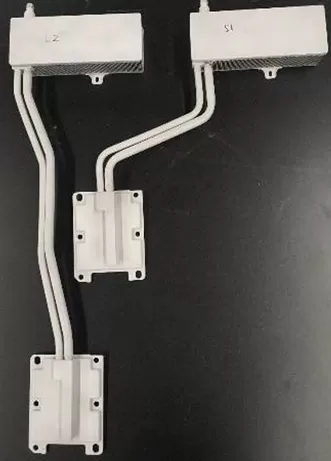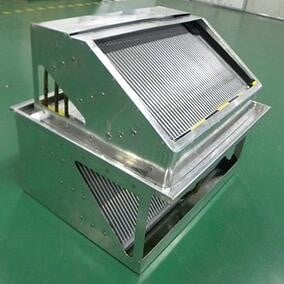Thermosiphons는 지난 몇 년 동안 인기가 높아진 효율적이고 다재다능한 2상 냉각 솔루션입니다. 3부로 구성된 블로그 시리즈 중 첫 번째 시리즈에서는 Thermosiphon이 정확히 무엇인지, 그리고 이를 독특하게 만드는 주요 기능에 대해 살펴보겠습니다.
보온은 무엇입니까?
Thermosiphon은 히트 파이프 및 기타 열 전달 장치에 자주 사용되는 모세관 심지 구조가 아닌 중력에 의존하여 유체를 순환시키는 수동 2상 냉각 시스템입니다. 모든 수동 2상 냉각과 마찬가지로 액체와 증기는 독립형 엔벨로프 내에 존재하며 펌프나 기타 움직이는 부품을 포함하지 않습니다.
열사이펀에는 여러 가지 다른 구조가 있지만 일반적으로 모두 증발기, 유체 루프(또는 단열 섹션) 및 응축기의 세 가지 기본 구성 요소로 구성됩니다. 증발기는 에너지를 시스템으로 흡수하여 작동 유체(일반적으로 냉매 또는 기타 유전체 유체)가 증기로 변합니다. 그런 다음 증기는 고온 증발기와 냉간 응축기(부력) 사이의 압력 차이로 인해 단열 섹션(증기 튜브)을 통해 이동하며, 여기서 열은 시스템에서 배출되고 증기는 다시 액체로 응축되어 중력을 통해 증발기로 돌아갑니다. 이 프로세스는 시스템에서 거부할 열이 있는 한 무기한 반복됩니다.


열사이펀의 일반적인 응용 분야
열사이펀은 다양한 산업 및 장치에 유용합니다. Thermosiphons는 서버, 네트워킹 장비 및 캐비닛 내의 CPU, GPU, ASIC 및 FPGA를 위한 효과적인 엔터프라이즈 솔루션입니다. 산업 및 전력 응용 분야는 풍력 및 태양광 인버터 IGBT를 냉각하기 위한 열사이펀의 이점을 누릴 수 있습니다. Remote Radio Units 및 Full cabinet과 같은 통신 장비의 전력 증폭기는 열사이펀의 높은 냉각 용량을 활용합니다.
열사이펀의 열 전달 계수는 알루미늄이나 구리와 같은 기존 재료보다 수백 배 더 높으며 에너지는 장치 전체에서 일정한 온도로 운반됩니다. 따라서 Thermosiphons는 더 큰 표면, 여러 장치에 걸친 열 전달 또는 중력에 대한 방향이 알려지고 고정되는 모든 응용 분야에 이상적인 옵션입니다.
Thermosiphon 테스트
Boyd에서 Thermosiphons는 신뢰할 수 있고 사용할 준비가 되었는지 확인하기 위해 다양한 테스트를 거칩니다. 압력 테스트, 누출 테스트 및 열 성능 테스트는 각 열사이펀이 사양을 충족하는지 확인하기 위해 Boyd에서 사용되는 방법 중 일부에 불과합니다.
다음 블로그에서는 Boyd에서 직접 접촉 루프 열사이펀, 2D 열사이펀 핀, 3D 직접 접촉 루프 열사이펀 및 공대공 루프 열사이펀의 네 가지 유형의 열사이펀 구성에 대해 자세히 설명합니다.






